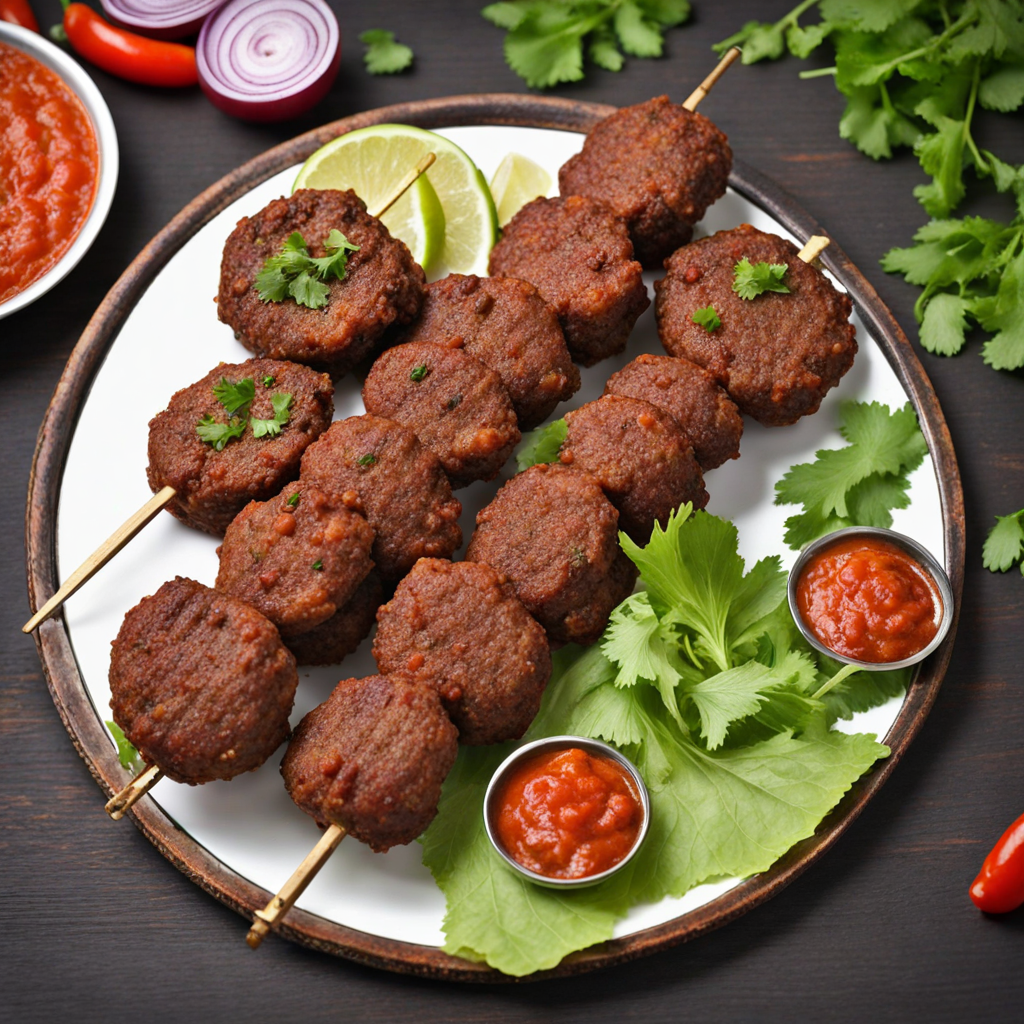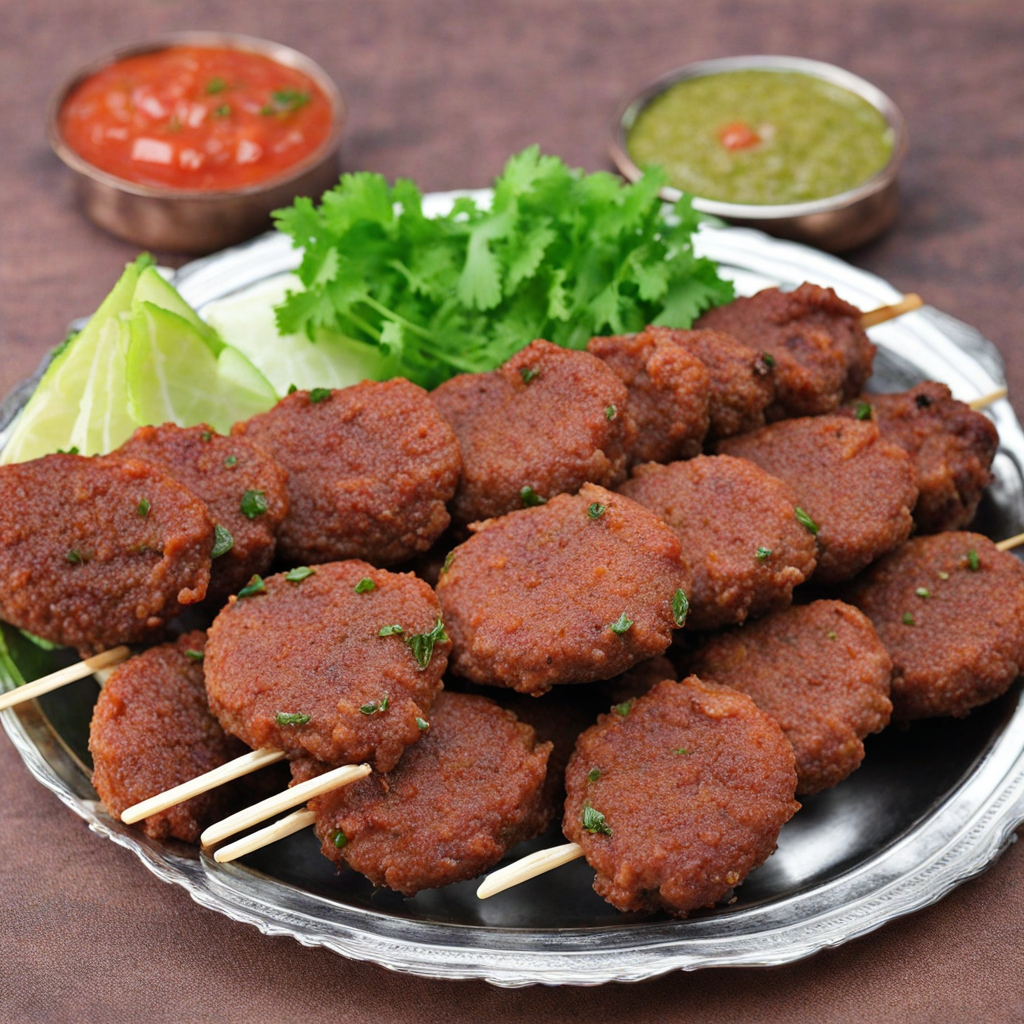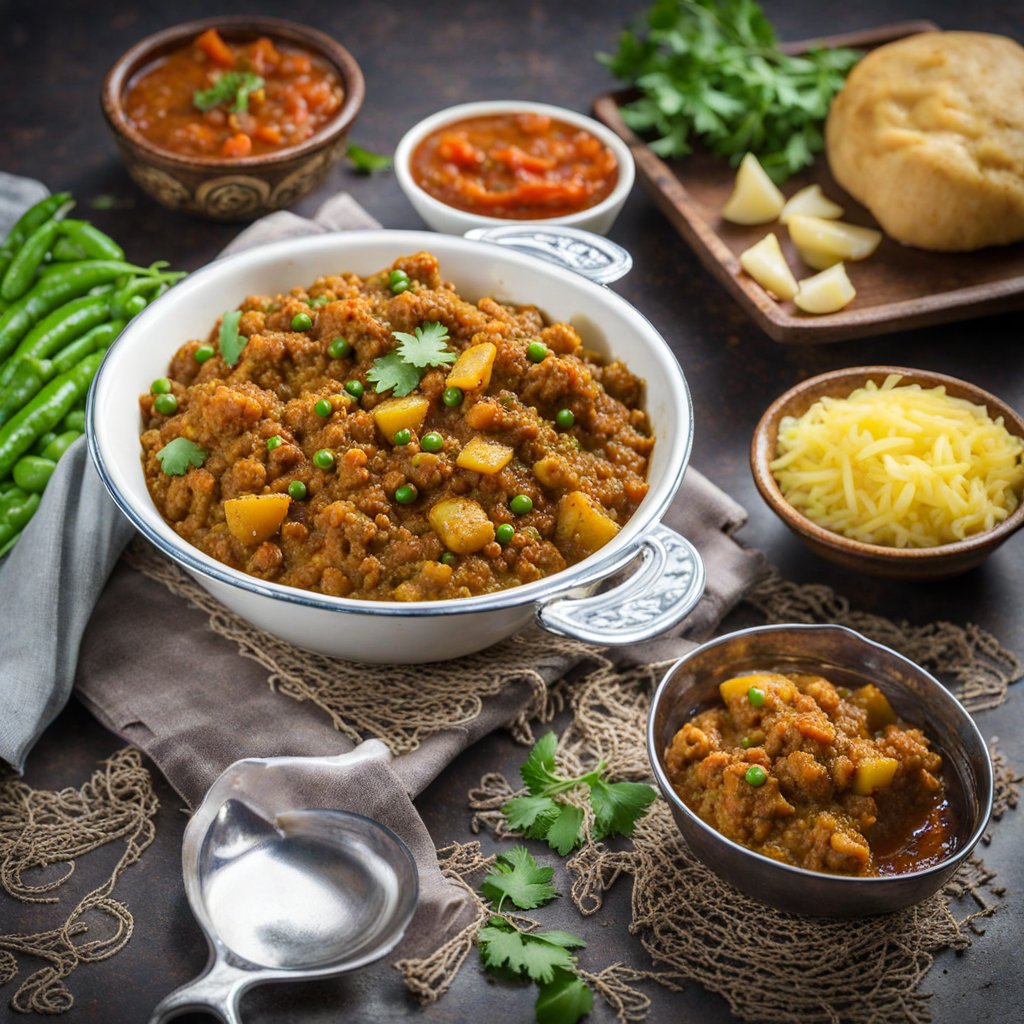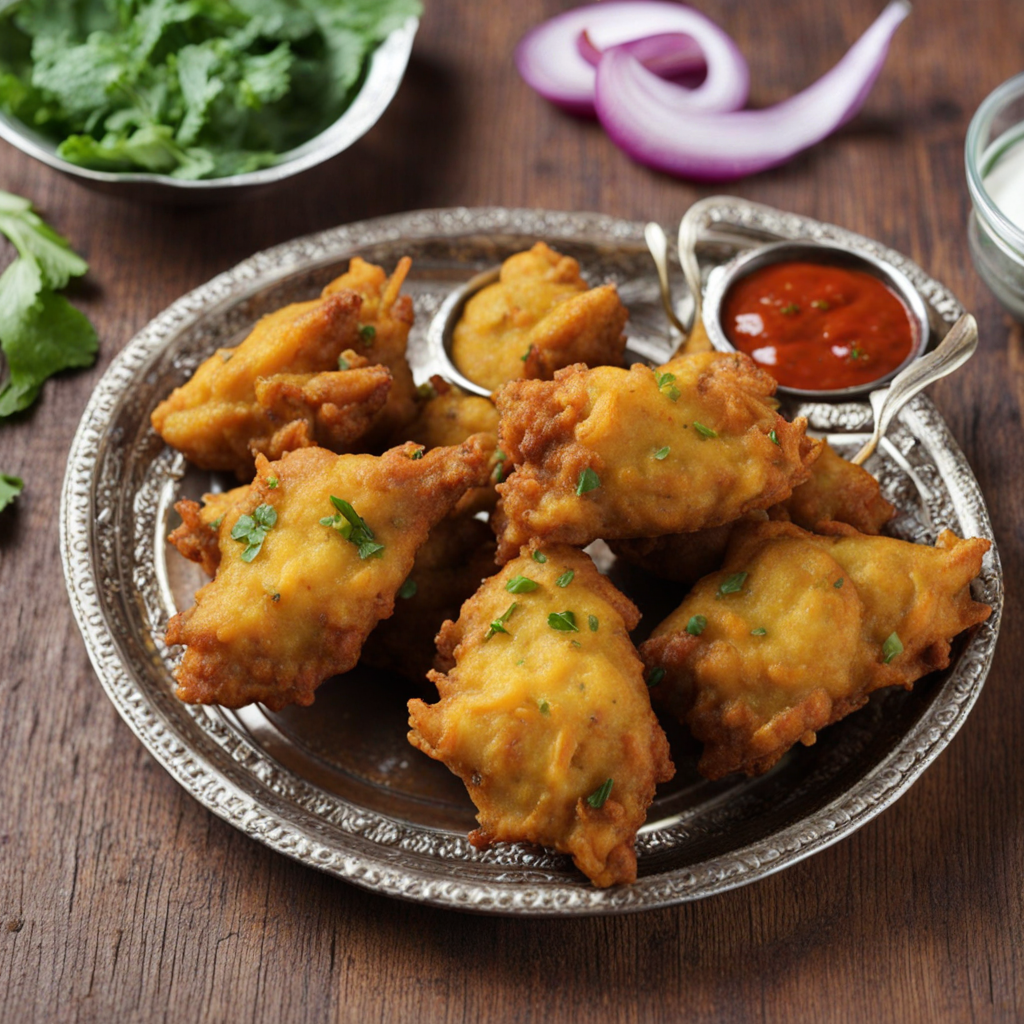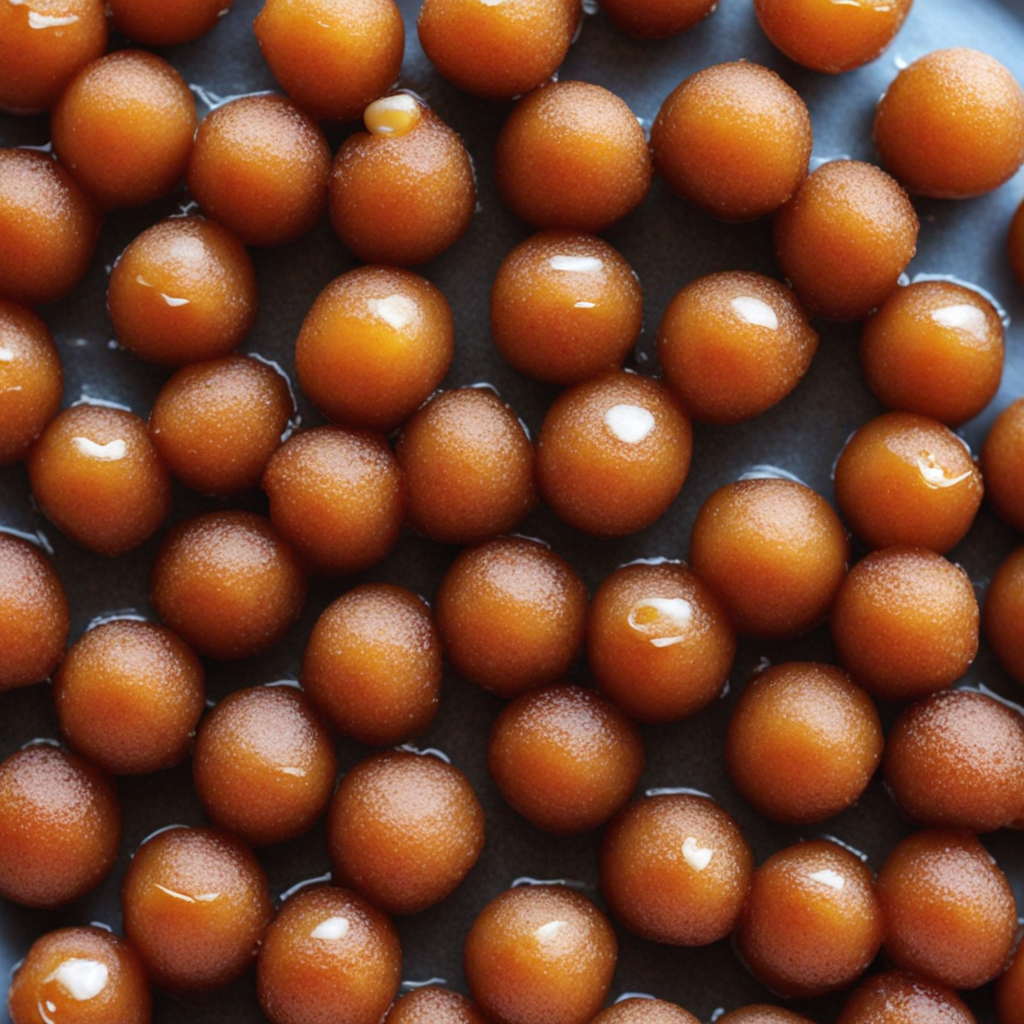Chapli Kebab
Chapli Kebab is a traditional Pakistani dish that hails from the Khyber Pakhtunkhwa province, and it is truly a culinary delight that showcases the rich flavors of the region. These kebabs are made primarily from ground meat, usually beef or lamb, mixed with an array of spices and ingredients that create a vibrant and robust flavor profile. The meat is combined with finely chopped onions, coriander, green chilies, and a mix of aromatic spices such as cumin and coriander seeds, which are often slightly toasted to enhance their flavors. The kebabs are typically shaped into thick, round patties, giving them a distinctive appearance that sets them apart from other kebab varieties. The cooking method for Chapli Kebab is just as important as the ingredients. They are traditionally shallow-fried in ghee or oil until they develop a crispy, golden-brown crust on the outside while remaining juicy and tender on the inside. The frying process not only adds a delightful crunch but also locks in the spices' aromas, making the kebabs incredibly fragrant. Served hot, these kebabs are often accompanied by fresh naan or paratha, along with a side of tangy yogurt sauce or mint chutney, which adds a refreshing contrast to the rich flavors of the meat. What truly sets Chapli Kebab apart is its unique blend of spices and textures. The addition of pomegranate seeds or crushed walnuts can be found in some variations, adding a pleasant sweetness and crunch that complements the savory notes of the meat. Each bite reveals layers of flavor, from the warmth of the spices to the freshness of the herbs, making it a feast for the senses. Whether enjoyed at a bustling street food stall or a family gathering, Chapli Kebab offers an authentic taste of Pakistani cuisine that is sure to leave a lasting impression on anyone eager to explore new culinary horizons.
How It Became This Dish
The Culinary Journey of چپلی کباب: A Pakistani Delight #### Origins of چپلی کباب چپلی کباب, commonly known as Chapli Kebab, is a traditional minced meat kebab originating from the Khyber Pakhtunkhwa province of Pakistan. The name 'Chapli' is derived from the Pashto word 'chapal', which means 'flat', referring to the kebab's distinctive shape. While its precise origins are often debated, it is widely believed that Chapli Kebab emerged from the culinary practices of the Pashtun tribes, particularly the Afghans who settled in the region. The kebab is primarily made from ground beef or lamb, mixed with a medley of spices, herbs, and sometimes vegetables, and shaped into a flat, round patty before being shallow-fried. The use of fresh ingredients like coriander, green chilies, and onions, along with aromatic spices such as cumin and garam masala, contributes to its rich flavor profile. Traditionally, the dish was prepared by men, often during communal gatherings or celebrations, symbolizing hospitality and the sharing of good food. #### Cultural Significance The cultural significance of Chapli Kebab extends beyond its delicious taste; it embodies the hospitality and communal spirit of the Pashtun people. In Pashtun culture, sharing a meal is a sacred act, reflecting generosity and community bonding. Chapli Kebab is often served during special occasions, weddings, and festivals, where it plays a central role in the feast. Its preparation is not just a culinary act but a social one, bringing families and friends together to celebrate heritage and tradition. Moreover, Chapli Kebab has transcended its regional boundaries to become a beloved dish throughout Pakistan and even in neighboring countries. It symbolizes the rich tapestry of flavors and culinary practices woven into the fabric of South Asian cuisine. As a representation of Pashtun identity, Chapli Kebab has also gained international recognition, with Pakistani restaurants around the world featuring it on their menus, allowing a diverse audience to experience its taste. #### Development Over Time The evolution of Chapli Kebab is a fascinating reflection of broader historical and social changes in the region. Initially, the kebab was a simple preparation made with readily available ingredients, primarily served among local communities. However, as trade routes opened and the exchange of culinary ideas flourished, the recipe began to adapt and incorporate various influences. During the Mughal era, which significantly impacted the culinary landscape of the Indian subcontinent, the fusion of flavors and cooking techniques introduced new spices and methods to traditional dishes. Though Chapli Kebab is firmly rooted in traditional Pashtun cuisine, the influences of Mughal cooking can be seen in the use of richer spices and the emphasis on aromatic flavors, which enhanced its appeal and complexity. In the 20th century, urbanization and globalization brought significant changes to food culture in Pakistan. As people moved to cities and lifestyles changed, Chapli Kebab found its way into street food culture, becoming accessible to a wider audience. Street vendors began to specialize in Chapli Kebab, serving it hot and fresh to eager customers. This transition from a traditional home-cooked dish to a popular street food item showcases the adaptability of the kebab to modern tastes and lifestyles. With the rise of social media and food culture in the 21st century, Chapli Kebab has gained a new platform for exposure. Food bloggers and influencers have celebrated this dish, sharing recipes and experiences, which has led to a resurgence of interest in traditional foods. Variations of Chapli Kebab have emerged, incorporating different meats, vegetarian options, and contemporary twists, appealing to a broader audience and reflecting changing dietary preferences. #### The Modern-Day Chapli Kebab Today, Chapli Kebab is celebrated not only for its flavor but also for its role in promoting cultural heritage. It is often featured in food festivals and cultural events, where chefs showcase the art of preparing this beloved dish. In many households, it remains a staple, often served with naan, chutneys, and fresh salad, emphasizing the importance of family meals and shared experiences. The kebab's popularity has also led to the establishment of restaurants that specialize in traditional Pakistani cuisine, with Chapli Kebab often touted as a signature dish. Such establishments not only cater to local clientele but also attract tourists seeking an authentic taste of Pakistan. The kebab has even inspired fusion dishes, where chefs blend it with international cuisines, creating new interpretations that celebrate its essence while appealing to contemporary palates. #### Conclusion The journey of چپلی کباب from its humble origins to its status as a cherished culinary icon illustrates the dynamic nature of food and culture. It serves as a reminder of the rich heritage of the Pashtun people, the significance of communal eating, and the ability of traditional dishes to adapt and thrive in changing times. As Chapli Kebab continues to evolve, it remains a symbol of identity, hospitality, and the universal love for good food. Whether enjoyed at a bustling street vendor or a family gathering, Chapli Kebab stands as a testament to the enduring power of culinary traditions that bring people together.
You may like
Discover local flavors from Pakistan


